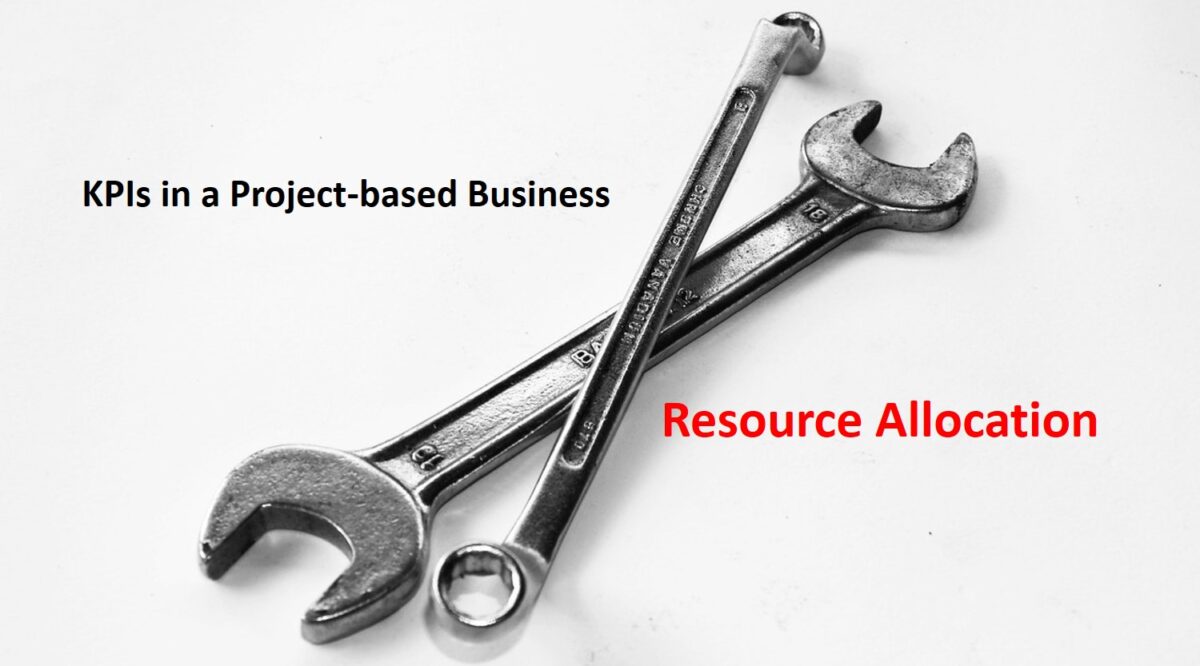Next to project profitability, resource utilization is generally viewed as the most important KPI for project-oriented businesses.
Resource utilization-metrics track the efficiency of resource allocation and utilization in the project, but also across the entire business. They include KPIs like resource utilization rate (identifying “the bench”), availability of key resources, and resource allocation balance.
Measuring resource utilization is an ongoing process. Month-end visibility is helpful to assess overall performance – project work, however, is executed concurrently. Therefore, it is important to establish clear metrics, track them consistently, and analyze the data to identify trends, patterns, and areas for improvement regularly (at least weekly if not daily). Effective resource utilization metrics can optimize resource allocation, improve project performance, and maximize the efficiency and productivity. In the following, I am taking a closer look at some important related aspects of resource allocation – bread-and-butter for any project-driven business.
Time Tracking
Implementation of a time tracking system or software allows project team members to record the time spent on different tasks and activities. Effective time tracking will help identify how resources allocate their time across projects and specific tasks, providing insights into their utilization. Activity buckets should reflect the nature of the project and its breakdown into meaningful task-subsets. They usually include direct time spent on
o Project Management,
o Contract Management,
o (Pre-) Engineering and Planning,
o Software development and PLC programming,
o Installation,
o Testing,
o Other relevant activities like Procurement (if linked to a project directly).
Resource Allocation Rate
RAR measures the percentage of time that resources spend on project-related activities compared to their total available time. This metric indicates how effectively resources are allocated to projects and helps identify any potential over or underutilization on individual basis.
Individuality is particularly important if project success hinges on availability of one or just a few key people with specific skills or capabilities, for example in project management or in specific IT environments.
Resource Availability
Resource availability defines the availability of key resources and their capacity to take on additional work. This can be done through a resource management system or even spreadsheet where you maintain information about resource availability, including vacations, training, and other non-project-related activities.
Utilization Ratio
This metric compares the actual time spent on project work to the available time. For example, if a resource worked 30 hours on project-related tasks out of a total available time of 40 hours, the utilization ratio would be 75%. This metric helps assess the efficiency of resource allocation, past and future.
Projection of utilization rates is essential for planning timelines for new projects. Creating cross-business visibility of actual and projected resource utilization could systematically identify underutilized resource, thus unlock further benefits.
Utilization ratios allow for several secondary KPIs, for example:
– Resource Over-allocation identifies instances where resources are allocated more work than they can handle within the given timeframe. Over-allocation can lead to project delays, decreased productivity, and increased stress for team members.
– Bench Time measures the time when resources are idle or not actively engaged in project work. Bench time indicates under-utilization and can be costly for the business.
– Workload Balance: Resource allocation rates and resource availability enable a business to analyze the workload distribution among resources to ensure a balanced allocation. Uneven workloads can lead to resource bottlenecks, burnout, or under-utilization. Workload balances support assessing the distribution of tasks and workload across team members to optimize resource utilization by entity or across the group.
Any project-driven business should consider a few key metrics related to resource allocation and resource balancing to increase efficiencies, manage project risk and thus improve profitability.
